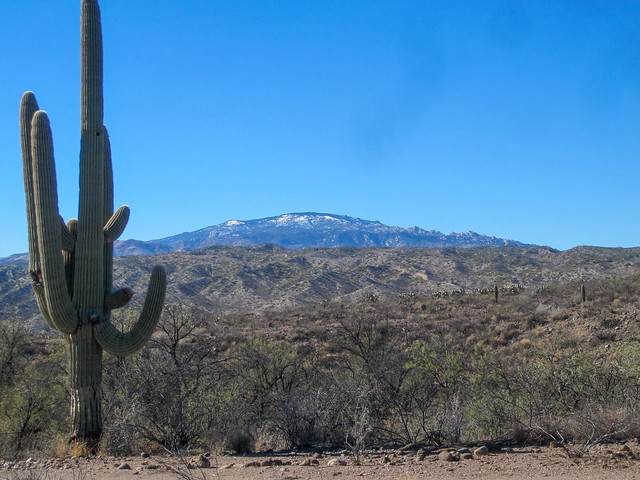As we work to learn more about the world around us, we are often amazed by others efforts. We thought we would share links to some of these efforts.
- Colleagues
- Photos
- Ecosystem Network Analysis
- Systems Thinking and Complexity
- www
- Wilmington and SE NC
- Reading List
- Cape Fear River
Scientists with whom we work include:
The Systems Ecology and Engineering Group at the University of Georgia.
Dr. Brian Fath at Towson University
The Ocean Biogeochemistry Laboratory at Stanford University
The Computational Learning Laboratory at Stanford University and the Institute for the Study of Learning and Expertise in Palo Alto, CA.
Dr. Albert Meier at Western Kentucky University
Dr. Robert Christian and Dr. Joe Luczkovich
Dr. Jeff Johnson at Univeristy of Florida
Santanu Ray at Visva-Bharati University in India
Jim Moody at Duke University, Duke Network Analsis Center
The Department of Biology and Marine Biology at UNCW is a remarkably collaborative place to work. We are actively devleping research collaborations with several laboratories in the department and on campus, as well as at the Center for Marine Science. While these collaborations develop, you might be interested in learning more about the Aquatic Ecology Laboratory and the Benthic Ecology Laboratory.
| Network Ecology is the study of ecological systems using network models and analysis to charcterize their structure, function, and evolution (Borrett et al. 2012), which we showed recently has been rapidly increasing (Borrett et al. 2014; right). |  |
Ecosystem Network Analysis (ENA) is a subset of Network Ecology. More specifically, it is a family of Input-Output methods derived from economics that we use to investigate the organization of ecosystems. Historically, there appear to be two schools of network analysis (Sharler and Fath 2009). The Ulanowicz School is based on Dr. Ulanowicz's work at the University of Maryland, while the Patten School is based on the work of Dr. Patten and colleagues, primarily from the University of Georgia. Network Environ Analysis (NEA) is a term often used for the Patten School of ENA. It is used in the holistic study of ecological systems to describe and quantify species-specific environments within the system. NEA methods include analyses of system structure, flow, storage, utility, and control. In addition, several indicators have been developed to characterize the whole system. For more information about NEA, I recommend the following papers listed in chronological order.
- Patten, B.C., Bosserman, R.W., Finn, J.T., and Cale, W.G., 1976. Propagation of cause in ecosystems. In: B.C. Patten (Editor), Systems Analysis and Simulation in Ecology, Vol. IV, Academic Press, New York, pp 457-579.
- Patten, B.C., 1978. Systems approach to the concept of environment. Ohio J. of Sci., 78:206-222.
- Patten, B.C., 1981. Environs: The superniches of ecosystems. Am. Zool., 21:845-852.
- Patten, B.C., 1982. Environs: Relativistic elementary particles for ecology. Am. Nat., 119:179-219.
- Patten, B.C., 1985. Energy cycling in the ecosystem. Ecol. Model., 28:1-71.
- Higashi, M., and Burns, T.P., 1991. Theoretical Studies of Ecosystems: The Network Perspective. Cambridge University Press, Cambridge.
- Higashi, M., and Patten, B.C., 1989. Dominance of indirect causality in ecosystems. Am. Nat., 133:288-302.
- Fath, B.D., and Patten, B.C., 1999. Review of the foundations of network environ analysis. Ecosystems, 2:167-179. doi:10.1007/s100219900067
- Fath, B.D. and S.R. Borrett. 2006. A MATLAB® function for network environ analysis. Environmental Modelling & Software 21:375-405. doi:10.1016/j.envsoft.2004.11.007 [pdf] The matlab software is available from here.
- Borrett, S.R and Lau, M.K. 2014. enaR: An R package for Ecological Network Analysis. Methods in Ecology and Evolution 5: 1206-1213. DOI: 10.1111/2041-210X.12282
Paper #8 provides a useful overview and synthesis of recent work and is a good starting point.
There is a movement afoot to develop our ability to understand and analyze complex systems. Check out these links to learn more.
Societies
- Society for Mathematical Biology
- Ecological Society of America
- International Society for Ecological Modelling
- Creative Learning Exchange
- Systems Dynamics Society
- American Society for Limnology and Oceanography
- American Institute of Biological Sciences
Institutes/Groups
- Knowledge Network for Biocomplexity
- New England Complex Systems Institute
- Santa Fe Institute
- Foodwebs.org
- Ecoinformatics.org
- National Center for Ecological Analysis and Synthesis.
- NIMBioS
- Mathematical Biology Institute
- Duke Network Analysis Center
Journals
- International Journal on Ecological Modelling and Systems Ecology
- Environmental Modelling & Software
- Ecological Complexity
- BioSystems
- Ecology Letters
- American Naturalist
- Oikos
Interesting Web Idea Spaces
There are a number of things that make SE North Carolina an incredible place to work and play. Here are links to a few of them.
- Airlie Gardens -- especially the summer concert series
- Cape Fear Museum of Science and History
- check out their exhibit on the Land of the Longleaf Pine forest to better understand the connection between the people of this region and their natural environment.
- Historic Downtown Wilmington
- Wilmington's Children's Museum
- Wilminton Rail Road Museum
- I am not sure it is possible to understand Wilmington without understanding the local history of the railroad and the Atlantic Coastal Line.
- Writghtsville Beach
- WHQR
- Cape Fear Arch
- This organization is raising the awarness of the region's natural history
- Wilmington is at the heart of the endemic range of the Venus Fly Trap. Learn more through this interesting article in the Smithsonian Magazine.
- Here is an excellent website for learning more about the Cape Fear estuary: from river to sea.
- Cape Fear River Basin information (PDF)
- Wilmington Water Tours - This is a great way to see part of the Cape Fear River and learn about some of the region's social and natural history.
For the curious, this is a log of some of the books and things that Dr. Borrett has been reading.
Owen-Smith, J. 2018. Research Universities and the Public Good: Discovery for an Uncertain Future. Stanford Business Books.
Jeffers, W.T., 2016. The Making of a Research University: James Woodward and UNC Charlotte, 1989-2005. UNC Charlotte
Isaacson, W. 2021. The Code Breaker: Jennifer Doudna, Gene Editing, and the Future of the Human Race. Simon and Schuster.
Capra, F and Luisi, PL. 2014. The Systems View of Life: A Unifying Vision. Camberidege University Press.
Margulis, L and Sagon, D. 2000. What is Life? Univerity of California Press
Schrodinger, E. 1967. What is Life? Cambridge University Press.
Stewart, I. 2011. The Mathematics of Life. Basic Books.
Rilke, R.M. The Man Watching.
Harmon, K. 2004. You Are Here: Personal Geographies and Other Maps of the Imagination. Princeton Architectural Press. (thanks CTE!)
Gleick, J. 2012. The Information: A History, A Theory, A Flood. Vintage. (thanks CTE!)
Robinson, K. 2011. Out of Our Minds: Learning to be Creative. (2nd edition, revised and expanded). Capstone Publishing. (thanks CTE!)
Christensen, C.M. and Eyring, H.J. 2011. The Innovative University: Changing the DNA of Higher Education from the Inside Out. John Wiley & Sons. (thanks CTE!)
Ulanowicz, R.E. 2009. A third window: natural life beyond Newton and Darwin. Templeton Foundation Press.
Thorp, H. Goldstein, B. 2010. Engines of Innovation: The Entrepreneurial University in the Twenty-First Century. The University of North Carolina Press (thanks CTE!)
Atwood, M. 2004. Oryx and Crake. and 2009. The Year of the Flood. Anchor Books. (thanks Mitch!)
Bellow, Alex. 2010. Here's Looking at Euclid. Free Press. (thanks M. Durako!)
The Cape Fear River is an impressive feature of North Carolina. I will be collecting links and resources to better understand the ecology and importance of this river on this page.


